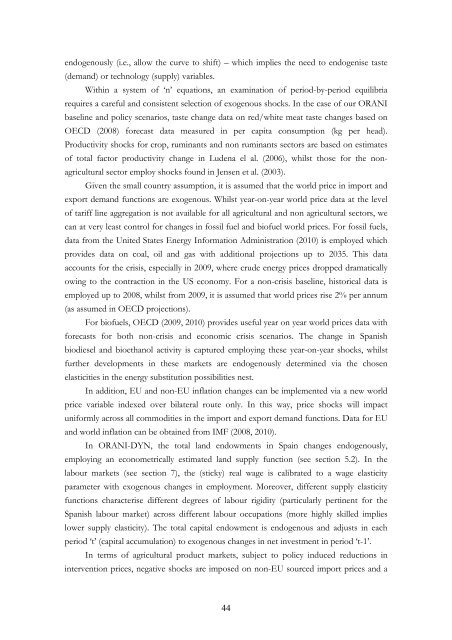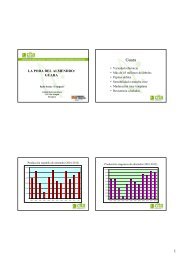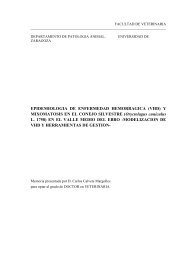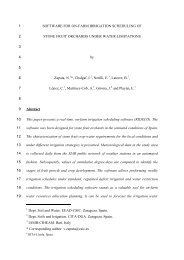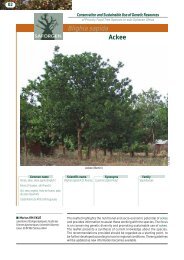1 A Recursive Dynamic Computable General Equilibrium Model For ...
1 A Recursive Dynamic Computable General Equilibrium Model For ...
1 A Recursive Dynamic Computable General Equilibrium Model For ...
Create successful ePaper yourself
Turn your PDF publications into a flip-book with our unique Google optimized e-Paper software.
endogenously (i.e., allow the curve to shift) – which implies the need to endogenise taste<br />
(demand) or technology (supply) variables.<br />
Within a system of ‘n’ equations, an examination of period-by-period equilibria<br />
requires a careful and consistent selection of exogenous shocks. In the case of our ORANI<br />
baseline and policy scenarios, taste change data on red/white meat taste changes based on<br />
OECD (2008) forecast data measured in per capita consumption (kg per head).<br />
Productivity shocks for crop, ruminants and non ruminants sectors are based on estimates<br />
of total factor productivity change in Ludena el al. (2006), whilst those for the nonagricultural<br />
sector employ shocks found in Jensen et al. (2003).<br />
Given the small country assumption, it is assumed that the world price in import and<br />
export demand functions are exogenous. Whilst year-on-year world price data at the level<br />
of tariff line aggregation is not available for all agricultural and non agricultural sectors, we<br />
can at very least control for changes in fossil fuel and biofuel world prices. <strong>For</strong> fossil fuels,<br />
data from the United States Energy Information Administration (2010) is employed which<br />
provides data on coal, oil and gas with additional projections up to 2035. This data<br />
accounts for the crisis, especially in 2009, where crude energy prices dropped dramatically<br />
owing to the contraction in the US economy. <strong>For</strong> a non-crisis baseline, historical data is<br />
employed up to 2008, whilst from 2009, it is assumed that world prices rise 2% per annum<br />
(as assumed in OECD projections).<br />
<strong>For</strong> biofuels, OECD (2009, 2010) provides useful year on year world prices data with<br />
forecasts for both non-crisis and economic crisis scenarios. The change in Spanish<br />
biodiesel and bioethanol activity is captured employing these year-on-year shocks, whilst<br />
further developments in these markets are endogenously determined via the chosen<br />
elasticities in the energy substitution possibilities nest.<br />
In addition, EU and non-EU inflation changes can be implemented via a new world<br />
price variable indexed over bilateral route only. In this way, price shocks will impact<br />
uniformly across all commodities in the import and export demand functions. Data for EU<br />
and world inflation can be obtained from IMF (2008, 2010).<br />
In ORANI-DYN, the total land endowments in Spain changes endogenously,<br />
employing an econometrically estimated land supply function (see section 5.2). In the<br />
labour markets (see section 7), the (sticky) real wage is calibrated to a wage elasticity<br />
parameter with exogenous changes in employment. Moreover, different supply elasticity<br />
functions characterise different degrees of labour rigidity (particularly pertinent for the<br />
Spanish labour market) across different labour occupations (more highly skilled implies<br />
lower supply elasticity). The total capital endowment is endogenous and adjusts in each<br />
period ‘t’ (capital accumulation) to exogenous changes in net investment in period ‘t-1’.<br />
In terms of agricultural product markets, subject to policy induced reductions in<br />
intervention prices, negative shocks are imposed on non-EU sourced import prices and a<br />
44


